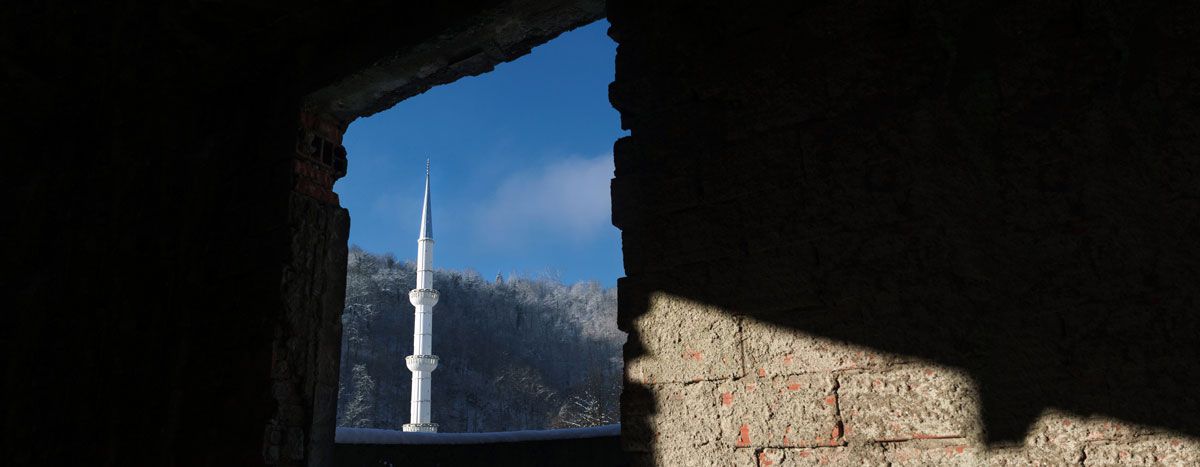
Srebrenica: A city fighting for its future
Published on
Srebrenica's scars run deep. The town, located on the eastern border of Bosnia and Herzegovina, suffered an unfathomable amount of bloodshed during a genocide that took place in 1995. 23 years later, between unfinished buildings and bullet holes, young locals explain how they struggle to reconcile the past with the present.
A road perforated with countless potholes snakes its way through the hinterland of the Republika Srpska. Gently upwards, along snow-covered forests. A few scattered houses stand to the left and the right, mostly unplastered, built from naked bricks. A few of them show signs of life; others are in ruins. Sometimes, it is difficult to distinguish one from the other. The street runs through a narrow valley where it ends in an impasse. Before the road comes to an end, in the main square of a gloomy town, the last street sign reveals the destination in Latin and Cyrillic letters: Сребреница – Srebrenica.
The bus that left Sarajevo several hours ago now stops in front of the Poslovni Centar shopping mall. Passengers disembark, the bus takes a turn and leaves the city immediately. It’s cold outside, and there is hardly anyone in sight. Most of the buildings in town seem to be abandoned. Only around 5,000 of the former 36,000 inhabitants still live in the city. The reason behind this massive demographic decline was the Bosnian War, which took place from 1992 to 1995. Or to be more precise: the killing and displacement of the Muslim population of Srebrenica perpetrated by the Serbian soldiers of the Republika Srpska. Srebrenica today looks and feels like a ghost town. Bekir Halilović, a young resident and political activist, is one of the driving forces who want this to change.
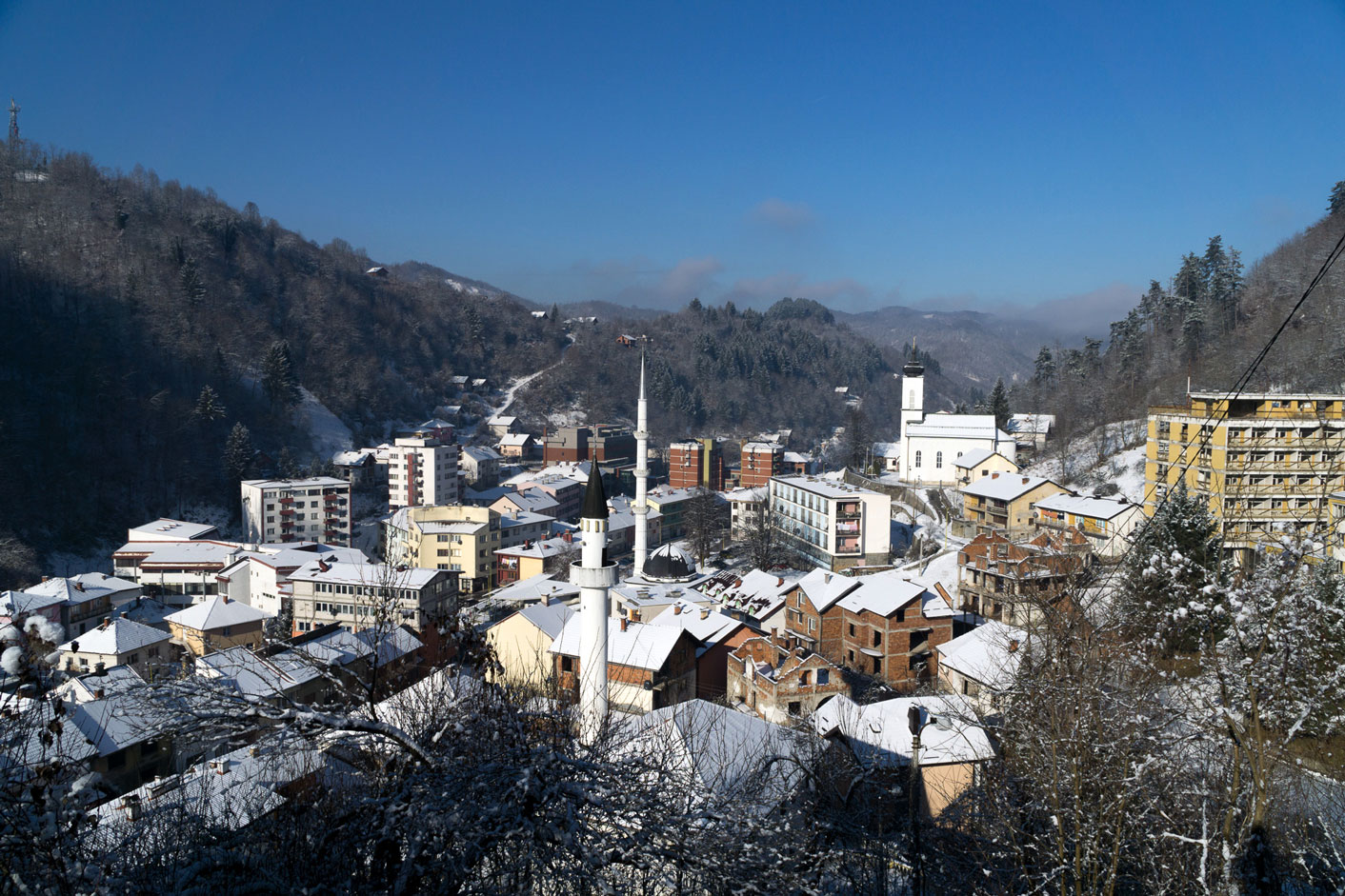
Still water runs deep
Bekir is sitting inside a café at the Poslovni Centar, lips curved upwards to present a gentle smile.The 24-year-old was born here in Srebrenica. But when Serbian soldiers overran this UN safe zone in July 1995, his mother was forced to flee with him and his brothers towards Tuzla, where they lived as refugees in the small city of Banovići. Now, more than 20 years later, Bekir moved back to his hometown to study international law at the local university. With his calm and friendly voice, he immediately starts talking, while Bosnian pop songs play in the background.
He is quickly interrupted after a few minutes. A French and Palestinian tourist enter the café to excitedly ask where they could find the "dead people monument". A friend of Bekir’s agrees to drive them to the location. Bekir heaves a disappointed sigh. Visiting the memorial has been the only reason tourists want to come to his town.
But Srebrenica has much more to offer, he explains. Walking along one of the few streets in town, Bekir heads towards the new mosque and orthodox church, situated next to one another. A large complex located behind the two religious buildings dominates the scenery: the Hotel Domavia. The yellow facade is crumbling, and only very few windows are left unscathed. Inside, weeds are taking over. The glorious days of the former Spa Hotel are long gone. They ended with the outbreak of the war in 1992. The city's economy and especially tourism have since never recovered.
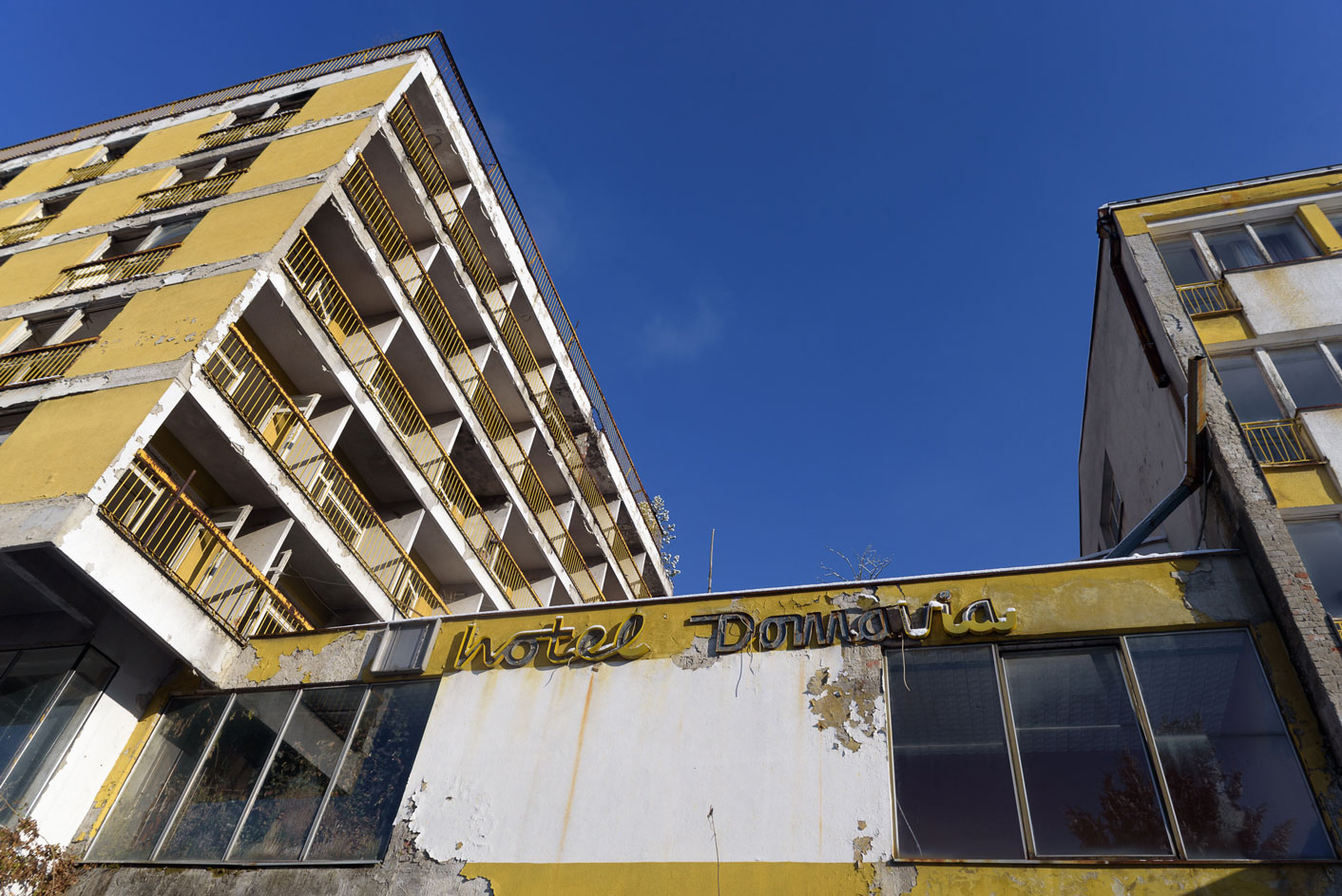
Like a silent witness, it reminds of the time in which Srebrenica was a major travel destination and known for its curative water, even beyond the country's borders. But it also recalls the over one-thousand-year-old history. The Romans were the first who recognized the value of the city's location and produced silver from the local mines. They named the town Domavia and later Argentaria, referring to the precious metal.
The silver mines brought great wealth to the city, and underground, there were other treasures still to discover. A large number of mineral springs have their source in the hills around Srebrenica. After Bosnia was annexed by the Austro-Hungarian Empire, a few of the water sources were tested scientifically for the first time. The water, rich in iron, turned out to have a beneficial impact and was used for medical purposes. Alongside the flourishing tourism, a water bottling plant was built, and the highly coveted Guber water became an export hit.
The springs didn't dry up until today, and still, the blood red stream flows through the snow-clad landscape. The scenery instinctively brings to mind all the bloodshed and atrocities of the war.
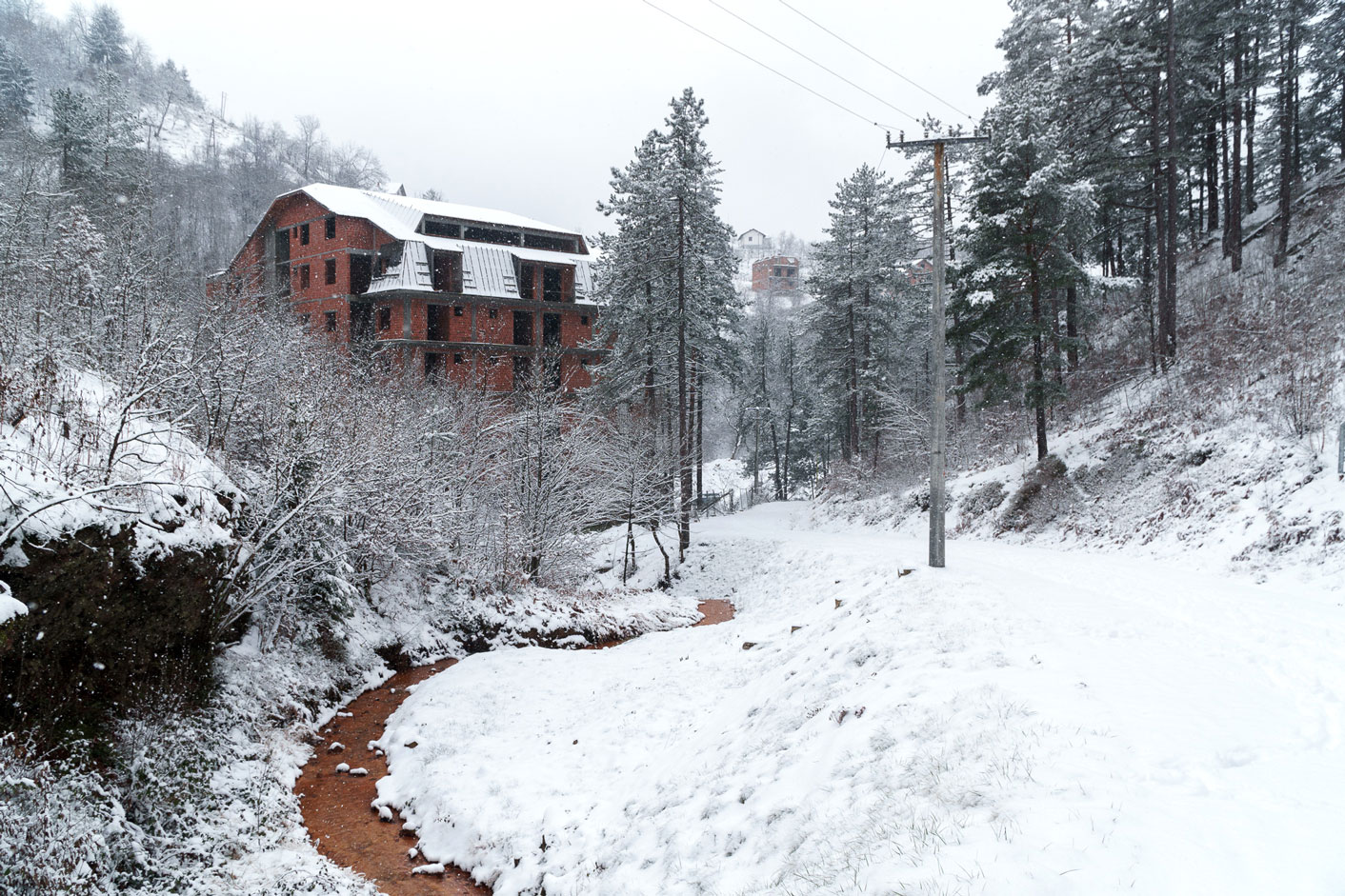
A slow recovery
Bekir ambles along the water and stops in front of multistory structural work. The bare bricks have the same colour as the rust-red stream that runs next to it. He shrugs his shoulders and points out that this was the main hope for Srebrenica. A new spa hotel and a bottling plant a few hundred meters upstream. This place could have been a catalyst for an economic upturn and could have generated new jobs in a country with a current youth unemployment rate of over 55%. A glimmer of hope for those who stayed and those who would like to return to their hometown.
But the construction work that was supposed to be finished in 2012 came to a premature end. The company can't get the license to complete the project. Conflict of political interests, Bekir assumes. According to the nationalist forces of both sides, Srebrenica is not supposed to recover from the war. The political representatives of all ethnic groups seem to benefit if the city is stuck in the past. Not in the glorious pre-war times, but in the paralysing post-war period.
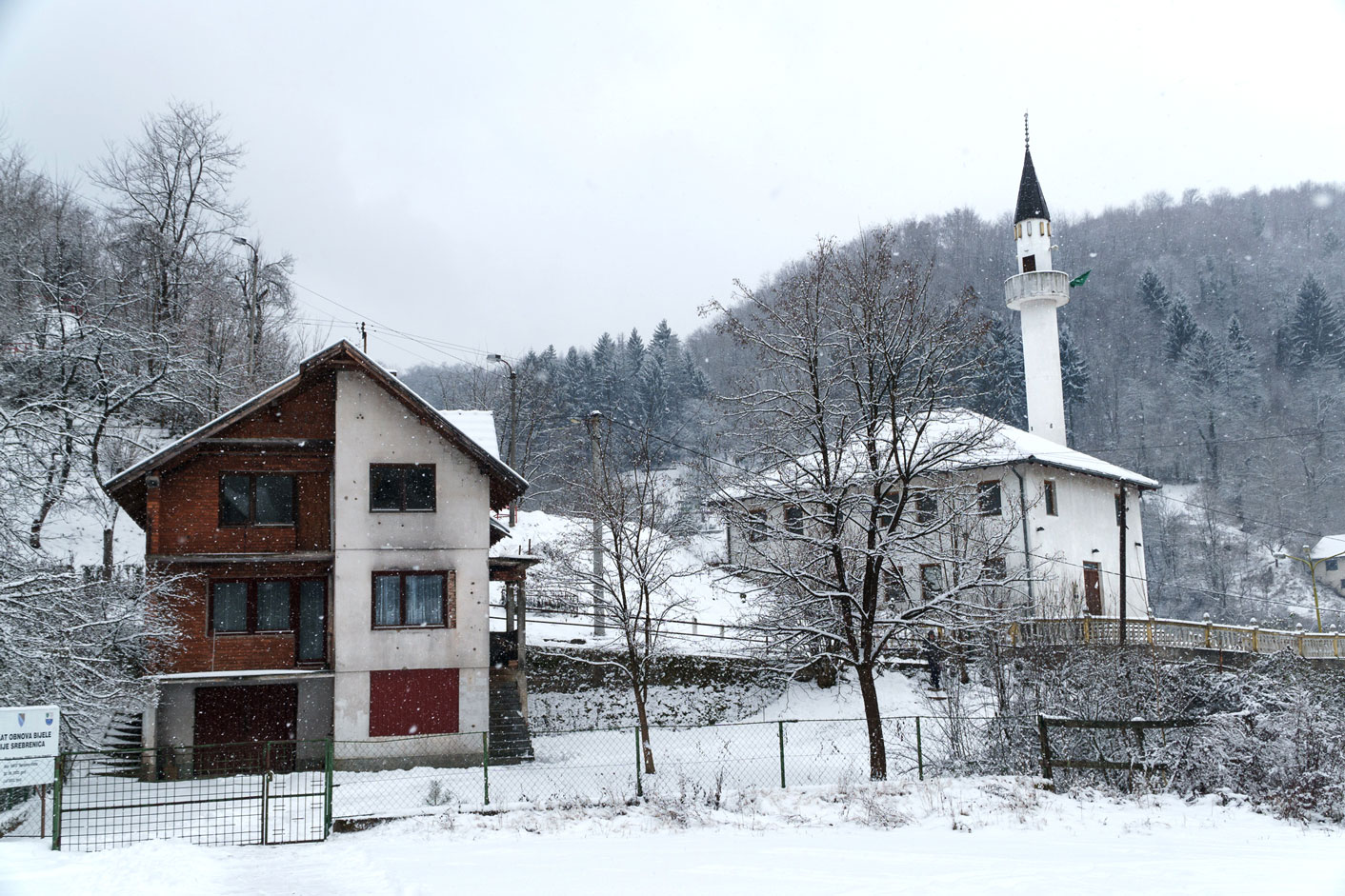
Bekir is disappointed by local politics, which is one of the reasons he joined the SDP. The Socijaldemokratska Partija is the only multi-ethnic party in Srebrenica, and takes a stand for an active dialogue between the various groups. Bekir wants to tackle the problems in his town. He knows that if nothing changes, this city and its inhabitants won't have a future.
But his vision is not directed only to the future; he knows that what happened here in the early 90's must not be forgotten. However, the permanent presence of the genocide has paralysed Srebrenica in its progress. Only a few former residents move back to the place where such horrible things took place. The scars run too deep. And Bekir has them, too. This is the place where he saw his father for the last time. He was only one year old and has no memory of the farewell. Years later, he saw his father’s face in photos his grandmother saved during the war. Many historical documents and private photographs were lost to the flames during the attack on the town. Serbian forces tried to erase any traces of the Muslim population in Srebrenica. Today, Bekir and other members of Adopt Srebrenica are making an effort to find any fragments that survived the war. In a laborious work effort, they collect, identify, and archive photos from pre-war times. In this way, a digital memory of the town has been created, which does not only bring back memories of the pre-war city itself, but also revives the memory of community members, like Bekir's father.
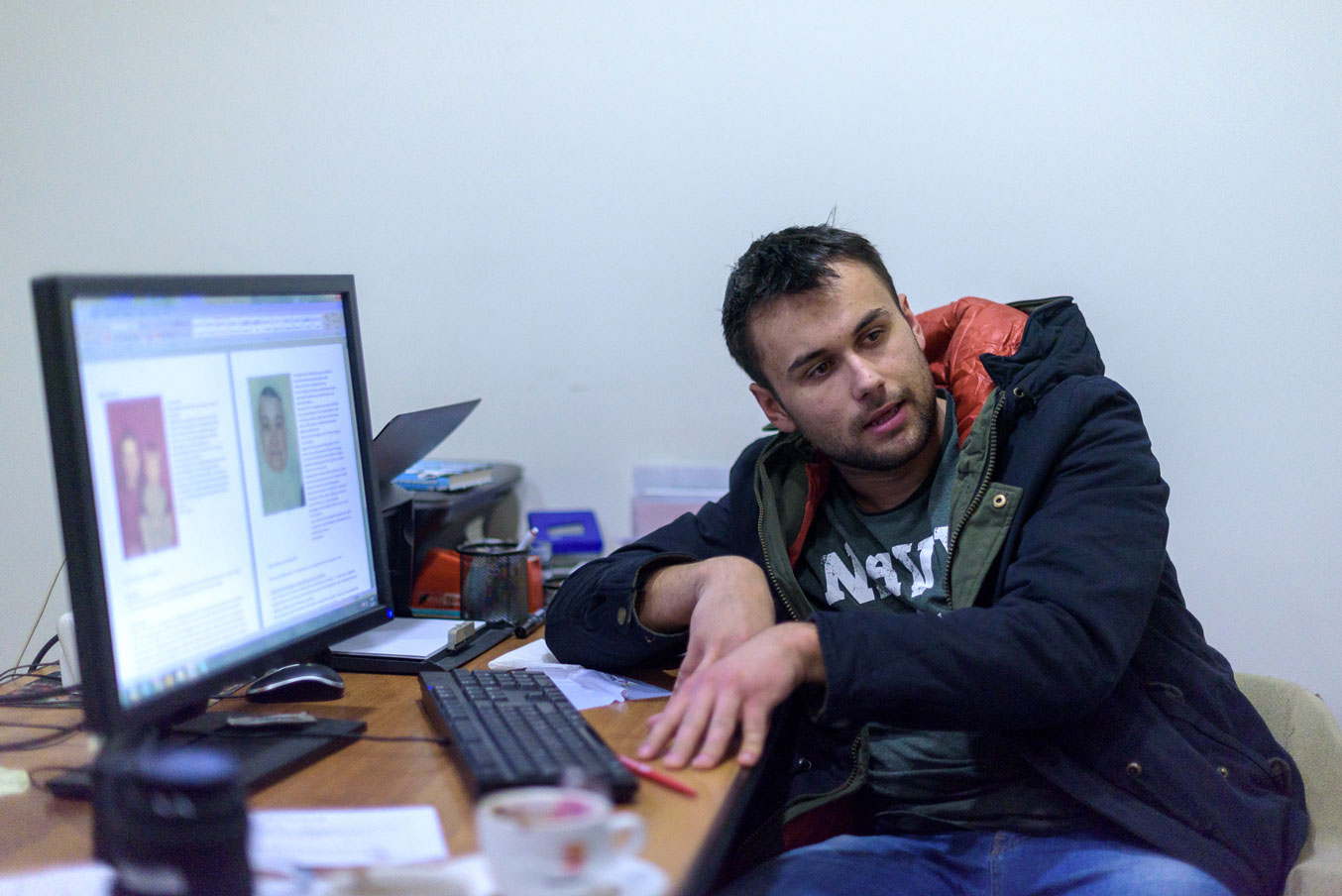
“The project initially started as a personal initiative by one of the members, but soon developed into a collective archive with dozens of images that will soon be accessible online as well,” Valentina Galić, another member of Adopt Srebrenica, explains. In contrast to Bekir, she vividly remembers the pre-war period in the city. She is 45 years old, and apart from working restlessly for political and social change, Valentina is also a mother. A circumstance that influences her point of view on today's Bosnia. "I’m old enough to say that I got a better childhood than the new generation right now," she says. A statement which reveals that the process of reconciliation is far from being concluded, and that economic stability still needs to be achieved.
The younger generations grow up in a politically hostile environment, she thinks, and therefore values of coexistence, freedom and peace need to be communicated to that audience. Valentina knows that the whole country needs to undergo this process, and that Srebrenica can take the lead and act as a role model for national development. With the photo archive, she wants to show the younger generation that there has been a time in which Croats, Serbs and Muslims lived and worked peacefully together in and around Srebrenica.
But Valentina doesn't see the future through rose-coloured glasses. She stares at her hands and sighs: "Politicians are still talking as if we are at war. They keep up the conflicts. That might be good for them, but not for the people." She knows how difficult it is to find the right balance between memory, accounting for the past and an optimistic view of the future. Especially when every personal fate is embedded in a more complex collective context. Family members of victims and perpetrators still live in the same neighbourhoods and streets. Yet many don't know what happened to their loved ones during the fall of Srebrenica. An uncertainty that makes it even more difficult to come to terms with one's past.
Concrete skeletons
At the time when the Serbian troops, under the command of Ratko Mladić, captured the Muslim enclave, Bekir's father tried to escape with other Bosnian fighters through the forests. They wanted to break through the enemy lines and walk towards Tuzla. Most of them were captured and executed; others didn't survive the exertions of this death march. All Bekir knows about the last days of his father is that he swapped his uniform with civilian clothes before he left. His remains were found years later in a mass grave.
The woods around Srebrenica appear thick and arcane. Experts say that not only are other mass graves out there but also landmines, which were buried during the siege. Bekir points to an overgrown spot next to the path near the well. It would be impossible to detect the mines if there are some.
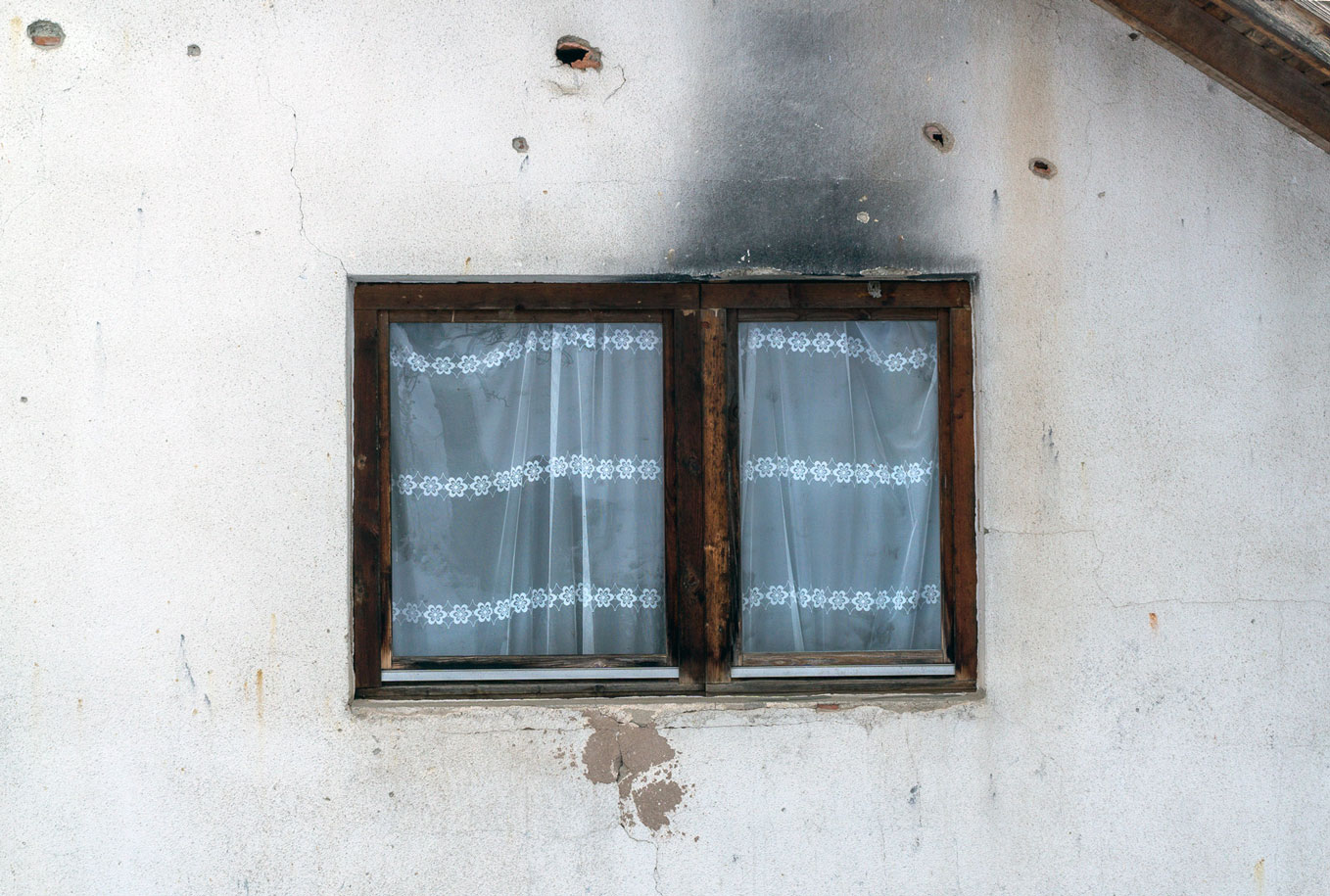
But this danger doesn't keep the inhabitants from entering the forest. Despite the enormous efforts by the international community to liberate Bosnia from landmines, it will take another 20 to 30 years until the entire region will be safe again. To detect and to defuse the leftover mines is a dangerous and expensive endeavor.
Shortly before Bekir reaches his destination, a blue metal wall blocks his path. On it, some signs promote the new bottling plant and the spa hotel that were supposed to be constructed. These buildings are not much more than concrete skeletons. In the prospective restaurant, windows have been installed merely to protect the lonely security guard from the icy wind. He is here to have an eye on the materials and tools the company left behind. Nobody foresees when they might come back to complete the construction work.
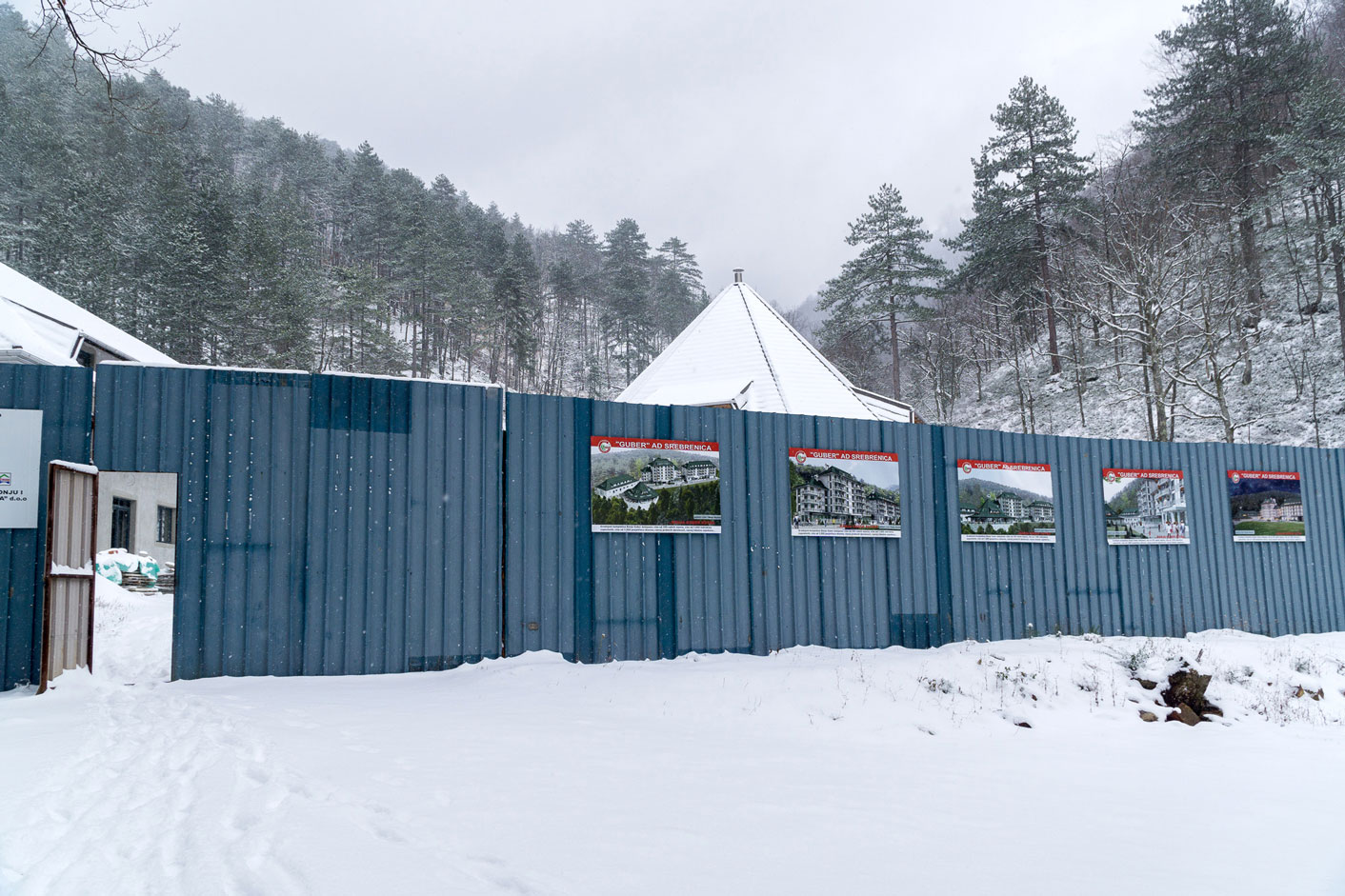
Bekir knows how difficult it is for change to happen in his town. You need to know the inhabitants, but also their past. That’s why he stops several times to have a quick chat with some of the residents. His visions for Srebrenica might not correspond with everyone, but during the last parliamentary elections of the Republika Srpska, 200 voters expressed their trust in this young politician. A result that gives him hope, and this year, Bekir is going to run again as a candidate.
“Not everything in Srebrenica lies in ruins.”
However, the situation of Srebrenica cannot be solved only through politics, he highlights. What is important to him is working together with the post-war generation. For the past few years, he has collaborated with the arrangement of the International Peace Camp. The organisation For Srebrenica hosts this camping event during which adolescents from different ethnic, religious and political backgrounds come together at Lake Perucac.
It can be seen as a sort of campaign to nip new hatred between the ethnic groups in the bud. But the concept attracts only those who already are of the same opinion. That there are also antagonists to peaceful coexistence becomes evident in the small provocations in the town. The Cyrillic text on some street signs got sprayed over with black colour. Or a Serbian flag that dangles from a clothesline to convey the owner's opinion. Those occurrences might look like trivialities, but they sow the seeds of new hate. Srebrenica is on the alert to prevent those acts of vandalism and provocation with nightly presence of police around the mosque, the church and the memorial.

Bekir, however, remains confident. “Not everything in Srebrenica lies in ruins,” he says. In his opinion the status quo is not so bad. That’s why he thinks it should also be conserved. At least in the form of a time capsule, which Bekir created together with his friends in 2016. It is a snapshot in time and in the year 2030 when it will be opened again, we will see if Bekir’s commitment helped to improve the current situation. It seems like he will restlessly drive for change, even if at time it feels like tilting at windmills.
Happy New Year
Srebrenica has always been a multiethnic enclave within a predominantly Serbian surrounding. An island at the end of an impasse. This geographical position turned out to be the fate of the city and its residents. A fate, that was predictable but yet unimaginable for the international community. Srebrenica was surrounded and under siege for months as Mladić prepared to storm the UN safe zone. The majority of the inhabitants tried to seek refuge at the UN base of Potocari, a few kilometers from Srebrenica. The Dutch soldiers (also known as "Dutchbat") were deployed at Potocari, a former battery factory, on behalf of the UN. From here, they should have protected the Muslim enclave from a Serbian attack, but due to a lack of equipment and support, they became mere bystanders to the worst massacre on European soil since World War II.
Bosnian Serb commander Ratko Mladić ordered the separation of the Muslim men from their families once he gained control over Potocari. The women and children were displaced while the men were murdered in several locations during the following days: 8,327 people in total.
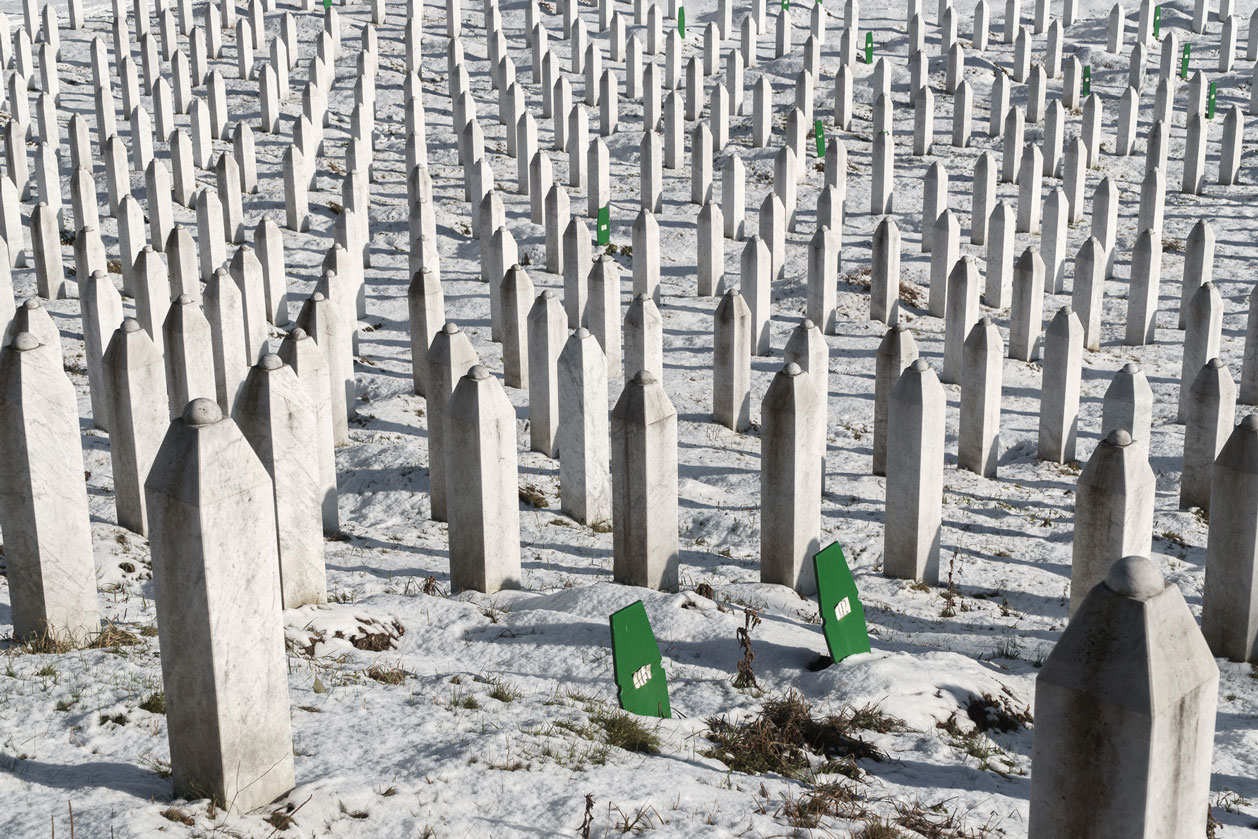
In the end, Bekir heads to the place where this genocide happened. "If you want to change something, you need to come here," he explains. It's important to realise what happened during those days in July 1995. Right across the street, directly in view of the former battery factory, thousands of uniform white gravestones spread out in equal distances from each other, covering the hilly cemetery. Each gravestone is a memorial to a lost son of this town. The fresh snow camouflages the white stones and makes them almost disappear, but the list of names at the entrance is infinitely long and illustrates the dimensions of the massacre. The surname "Omerović" alone has dozens of entries, an entire family tree erased. Bekir stops at the grave of his uncle and prays before he looks over the massive number of gravestones and mumbles the age of the victims, "22", "25". "They were kids," he says, people his age today. Between the white pillars stand a few green wooden tablets. These only have numbers without names on them and are the newest graves. Each year on July 11th, the latest discovered and identified remains are buried during the Memorial Day. A day that still creates an international stir, but as soon as the ceremony is over, the camera teams leave the city and Srebrenica is left alone once again.
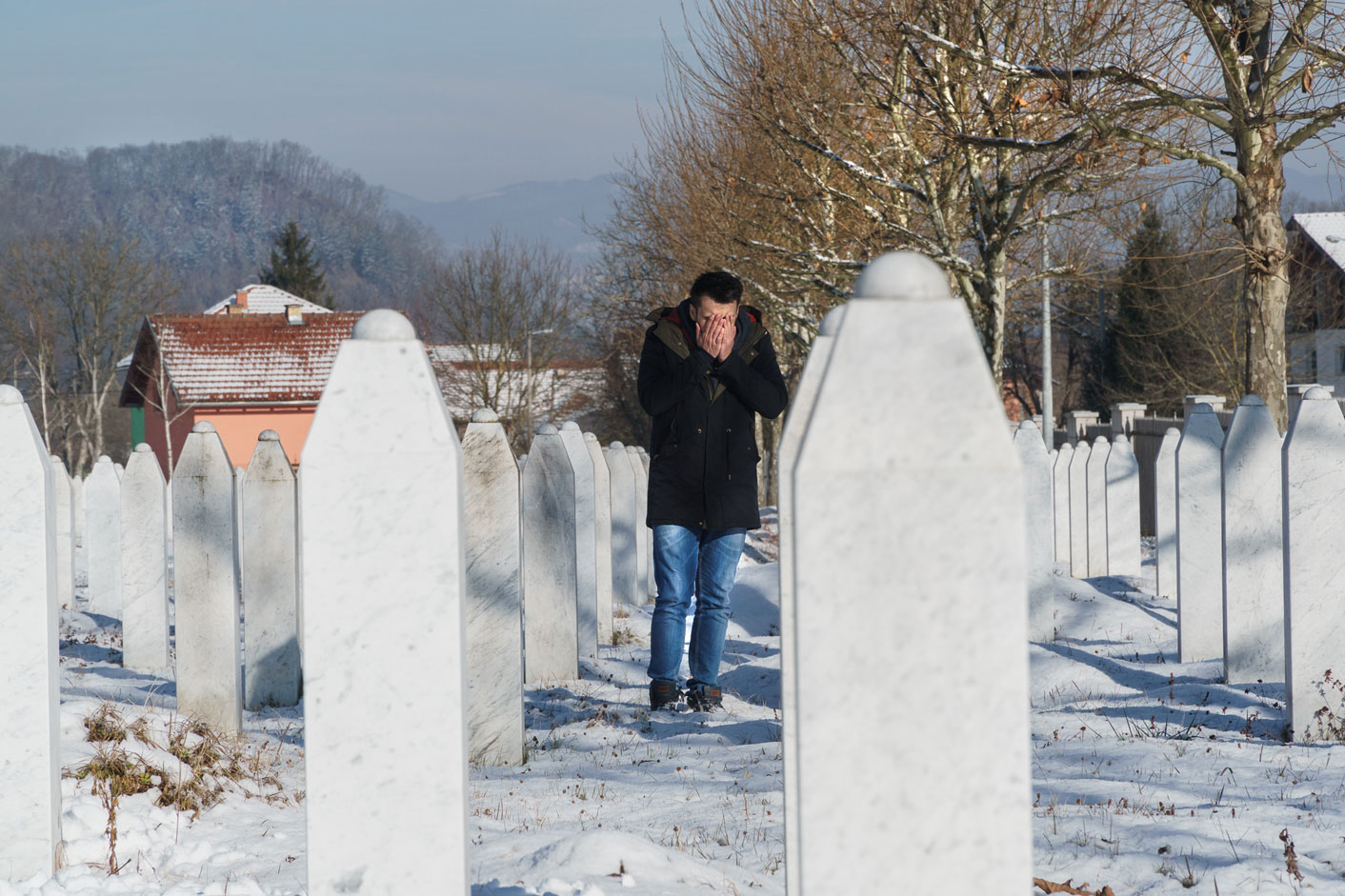
Bullet holes decorate the walls throughout the city. Only a few houses have their lights on, with smoke billowing out of their chimneys. Now it becomes even clearer, to just how many homes are abandoned here. The majority seem to be uninhabited. In the very center, there are two houses without a roof. It snowed inside, and bricks are missing on the wall. It seems as if the rubble was used to construct the new building which stands right in the middle. Maybe this is precisely the mindset Bosnia needs. In the end, it is a battle for normality that Srebrenica is fighting for.
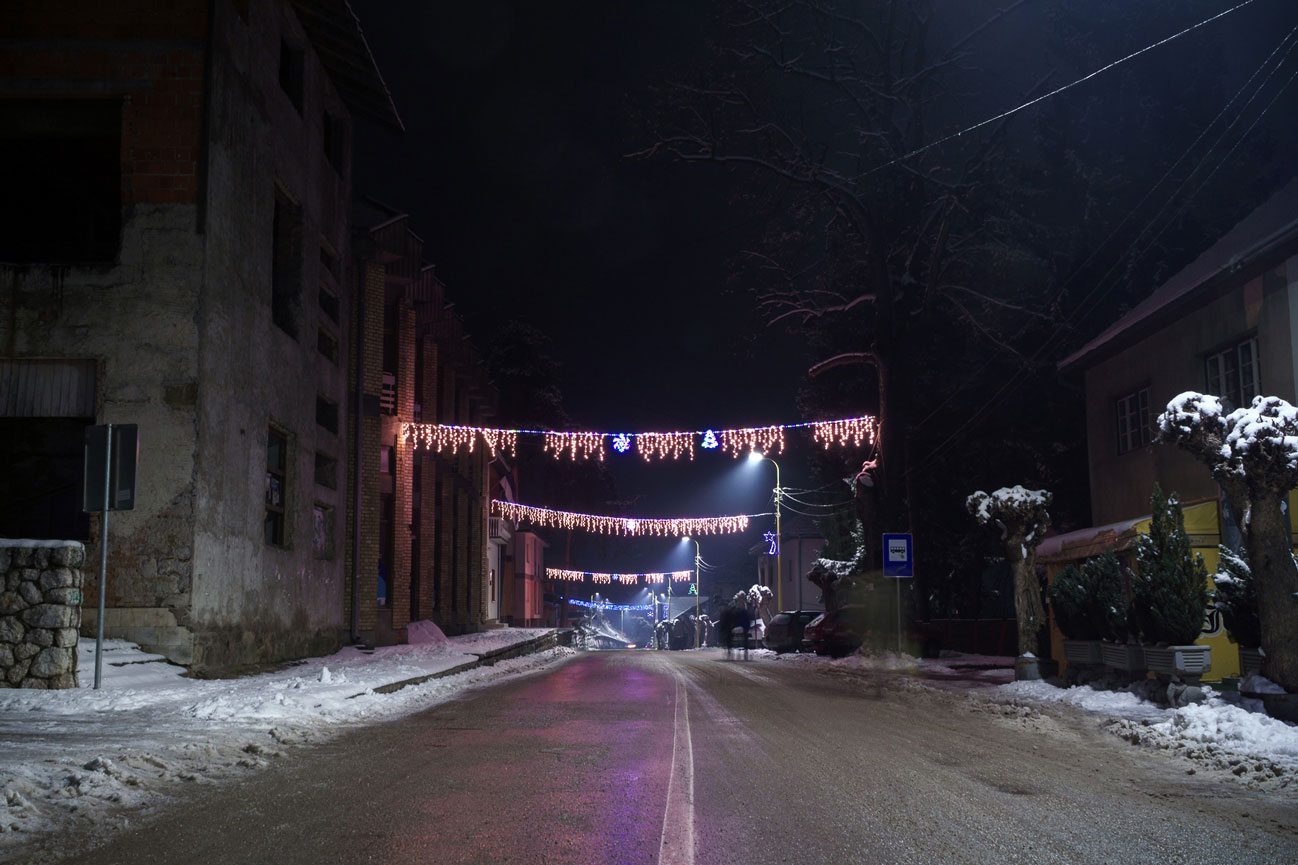
The bus heads back to Sarajevo. The street leading out of town is decorated with fairy lights spanning across the road from one abandoned building to the other. As the bus takes off, there is a neon sign with "Srećna Nova Godina" – Happy New Year – written on it.



